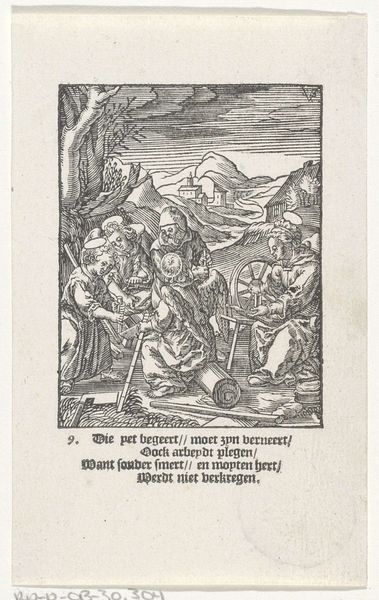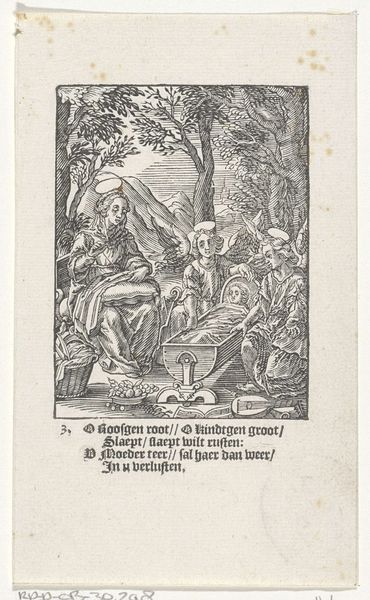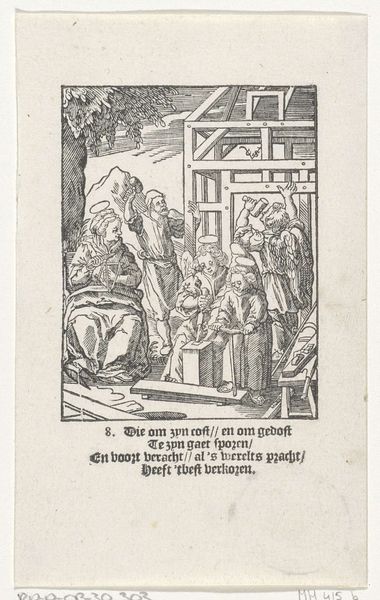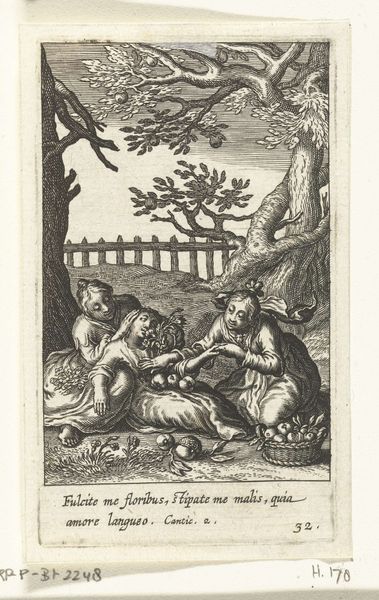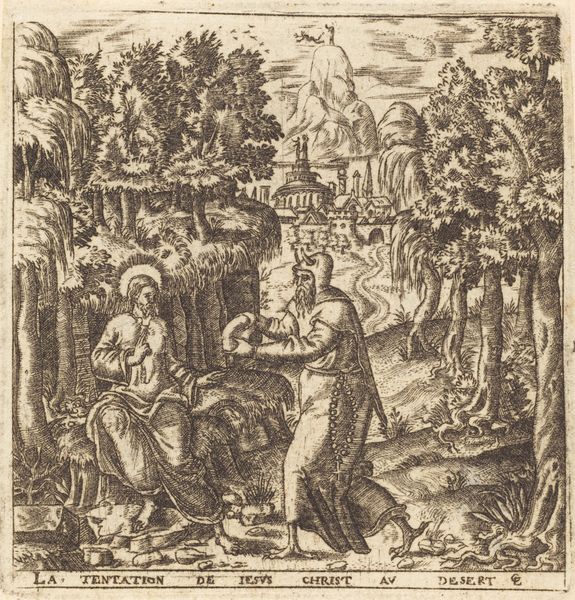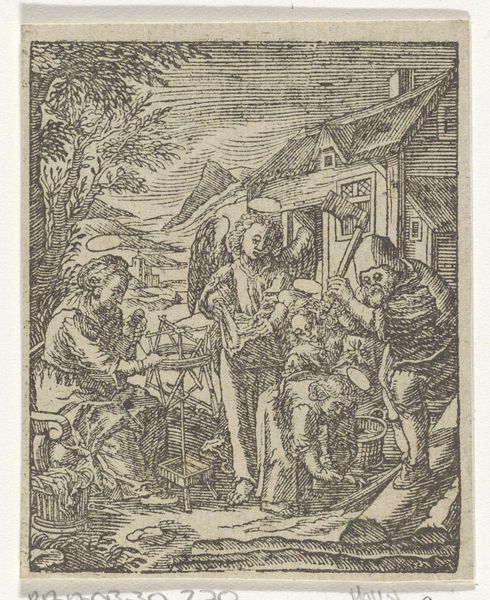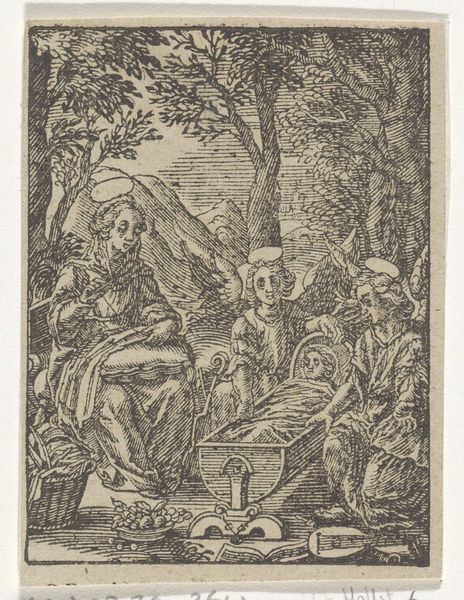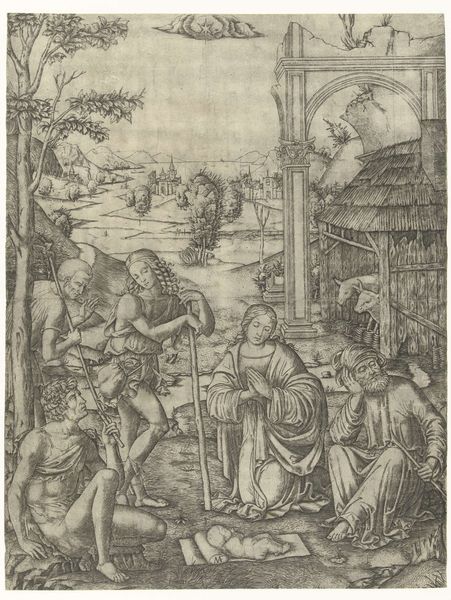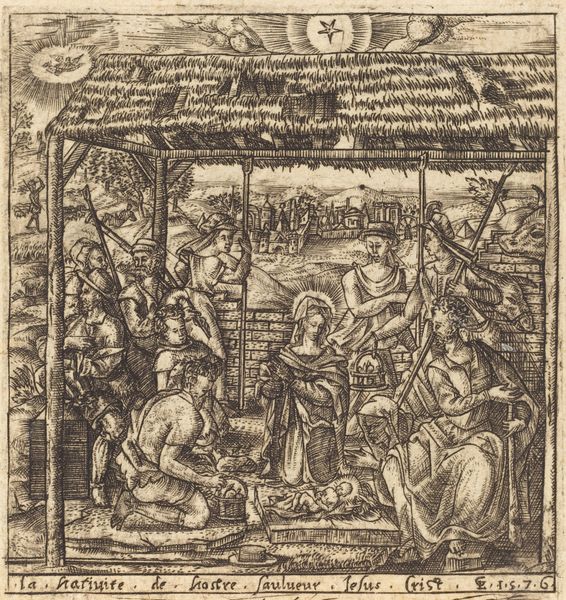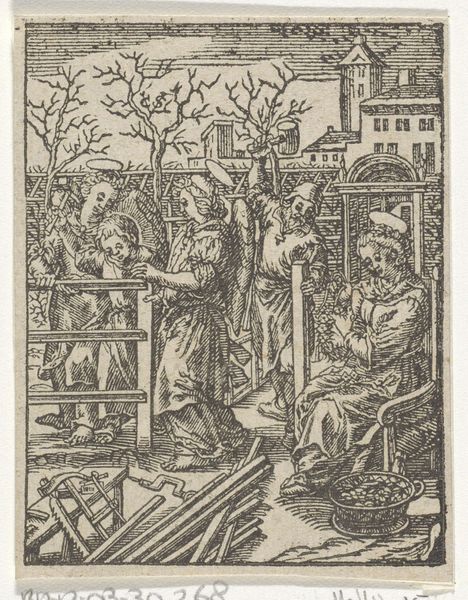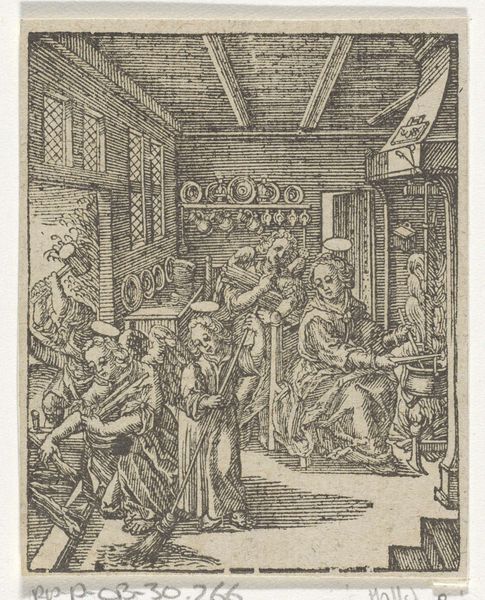
print, engraving
#
narrative-art
# print
#
pen sketch
#
old engraving style
#
figuration
#
line
#
history-painting
#
northern-renaissance
#
engraving
Dimensions: height 137 mm, width 87 mm
Copyright: Rijks Museum: Open Domain
Curator: Ah, here we have "Christuskind raapt houtsnippers op," or "Christ Child Gathering Wood Shavings," an engraving created around 1617 by Christoffel van Sichem II, currently residing in the Rijksmuseum collection. Editor: It's immediately striking, isn't it? That sharp contrast, almost brutal in its starkness. It feels…busy. There's so much going on compositionally, pulling the eye in multiple directions simultaneously. Curator: Yes, Sichem employed engraving, a printmaking technique involving cutting lines into a metal plate, to achieve that intricate linework. You’ll note the dense cross-hatching creates areas of deep shadow and volume, a stylistic choice deeply embedded in Northern Renaissance aesthetics. Editor: The density certainly builds up tension, almost like a visual claustrophobia. And that angel hovering... it feels awkwardly placed, disrupting what would otherwise be a relatively contained domestic scene. Its wings interrupt the flow. Is this a comment on the integration of divine presence into everyday life? Curator: Precisely. Observe how Sichem utilizes linear perspective, albeit imperfectly, to establish depth, drawing the viewer’s gaze back toward the implied vanishing point. We see how socio-religious values shaped the production and reception of art. The emphasis on piety and labor as pathways to virtue, aligning with Protestant values of the time. Notice how Christ is actively working. Editor: But the overall effect remains disjunctive to my eye. There is a struggle between the lines and the thematic narrative it fails to create balance; everything seems to vie for focal point but ultimately scatters without ever landing on one subject. Is there an established artistic dialogue occurring here through spatial dimensions? Curator: An insightful question. It pushes us to examine how compositional choices convey societal and institutional power, it is important to study because his artistic intention, despite technique, communicates ideas about authority to shape culture. Editor: It forces us to consider perspective on Northern Renaissance visual traditions beyond skill but, more importantly, about how to represent authority itself. Fascinating. Curator: Indeed. Viewing van Sichem's work through these analytical frameworks not only deepens our understanding of its internal mechanics but the broader societal forces in play.
Comments
No comments
Be the first to comment and join the conversation on the ultimate creative platform.
